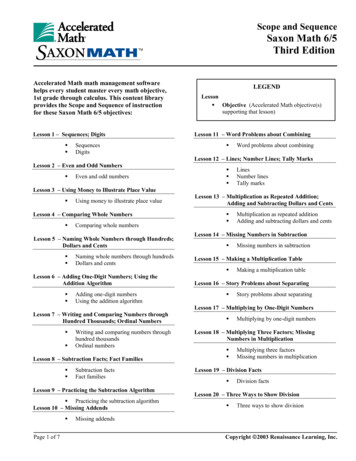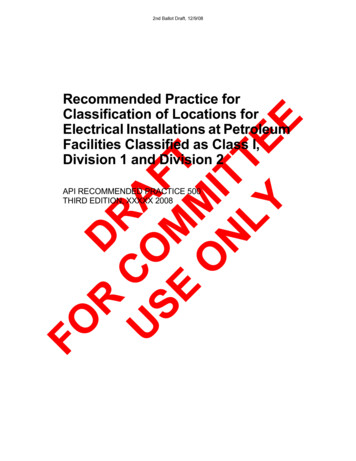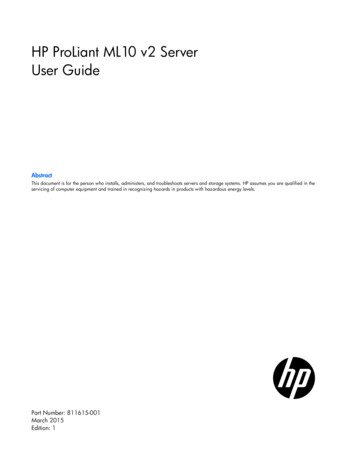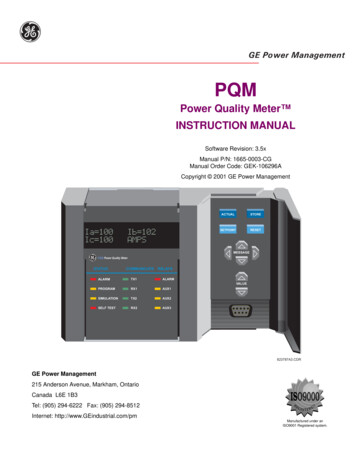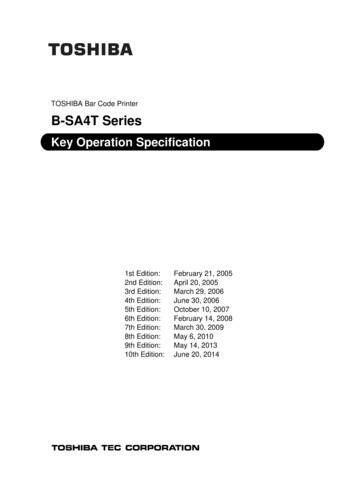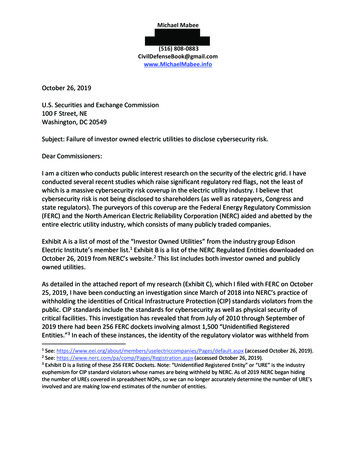
Transcription
Chapter 2The Power of Tradeand ComparativeAdvantageMODERN PRINCIPLES OF ECONOMICSThird Edition
Outline Trade and Preferences Specialization, Productivity, and theDivision of Knowledge Comparative Advantage Trade and Globalization2
Discussion QuestionThink of the last time you bought or soldsomething. Why did you make the trade?Answer: You probably traded because youpreferred what you got over what you gaveup. For example, if you bought a candy barfor 1, you probably preferred the candy barto having 1 in your pocket.3
IntroductionBenefits of Trade1. Trade makes people better off whenpreferences differ.2. Trade increases productivity throughspecialization and the division of knowledge.3. Trade increases productivity throughcomparative advantage.4
Trade and PreferencesTrade Creates Value Trade moves goods from people who valuethem less to people who value them more. Trade makes people with differentpreferences better off.5
SpecializationTrade Allows Specialization With no trade, there is no specialization. People will specialize in the production of asingle good only when they can trade forother goods.6
SpecializationIncreased Productivity We can produce more through trade than byindividual production. People who specialize have moreknowledge about their field. Because they sell large quantities, peoplewho specialize can take advantage oflarge-scale equipment.7
SpecializationDivision of Knowledge Without specialization, each personproduces their own food, clothing, and so on. Each person has the same knowledge aseverybody else. The combined knowledge of a society isnot much more than that of a singleperson.8
SpecializationDivision of Knowledge With specialization, much more knowledge isused than could exist in a single brain. Knowledge increases productivity sospecialization increases total output. Every increase in world trade is anopportunity to increase the division ofknowledge.9
Self-CheckOne of the benefits of specialization is:a. Less pollution.b. More equality.c. Increased productivity.Answer: c – increased productivity.10
Comparative AdvantageAbsolute and Comparative Advantage Another reason to trade is to take advantageof differences. Countries have different climates, levels ofhuman capital, and so on. Different countries are therefore suited toproduce different goods.11
DefinitionAbsolute advantage:The ability to produce the same goodusing fewer inputs than anotherproducer.12
Absolute AdvantageUnits of LaborCountryComputersShirtsMexico122U.S.11 The U.S. can produce both computers andshirts at lower cost (less labor). The U.S. has an absolute advantage in theproduction of both goods.13
DefinitionComparative advantage:Producing goods at the lowestopportunity cost.14
Comparative AdvantageUnits of LaborCountryComputersShirtsMexico122U.S.11 Assuming each country has 24 units of labor:Production OR122415
Comparative AdvantageUnits of on 2416
Comparative AdvantageProduction 24 With no trade, each country will produce someof each good. The opportunity cost of a good is the amountof the other good that is given up.17
Comparative AdvantageProduction 24 In Mexico, 1 computer will cost 6 shirts, while 1shirt will cost 1/6 of a computer. In the U.S., 1 computer will cost 1 shirt, and 1shirt will cost 1 computer.18
Comparative AdvantageOpportunity CostCountry1 Computer1 ShirtMexico6 shirts1/6 computerU.S.1 shirt1 computer Mexico has a comparative advantage (lowestopportunity cost) in shirts. U.S. has a comparative advantage (lowestopportunity cost) in computers.19
Self-CheckIf country A is able to produce furniture at alower cost than country B, we would say thatcountry A has a(n):a. Absolute advantage.b. Comparative advantage.c. No advantage.Answer: a – absolute advantage meansproducing a good with fewer inputs (lower cost).20
Comparative AdvantageAbsolute and Comparative Advantage To benefit from trade, a country doesn’t needto have an absolute advantage. A country can benefit from trade if it has acomparative advantage. Comparative advantage can be illustratedwith a production possibilities frontier.21
DefinitionProduction PossibilitiesFrontier:Shows all the combinations of goodsthat a country can produce given itsproductivity and supply of inputs.22
Trade Increases Productivity If each country produces some of each goodand only consumes what it produces:Production Possibilities (no 131423
Trade Increases Productivity If each country specializes and trades, there ismore of everything:Production Possibilities (before :142224
Trade Increases Productivity If each country specializes and trades, there ismore of everything (Mexico is giving 3 shirts for1 computer):Production Possibilities (after 142225
Trade Increases Productivity26
Comparative AdvantageComparative Advantage and Wages Differences in wages reflect differences inproductivity. Wages will be higher in high-productivitycountries than in low-productivity countries. Trade raises wages to the highest levelsallowed by a country’s productivity.27
Trade and GlobalizationGlobalization and Wages Wages will rise in high-demand industriesand fall in low-demand industries. Workers will move from low-wage industriesto high-wage industries until wages equalize. The transition isn’t always quick or easy.28
Takeaway Trade makes people better off whenpreferences differ. With specialization and trade, the total sumof knowledge used in an economyincreases tremendously. A country can increase its standard of livingby specializing in what it can make at low(opportunity) cost and trading.29
MODERN PRINCIPLES OF ECONOMICS Chapter 2 Third Edition The Power of Trade and Comparative Advantage. Outline Trade and Preferences . everybody else. The combined knowledge of a so

